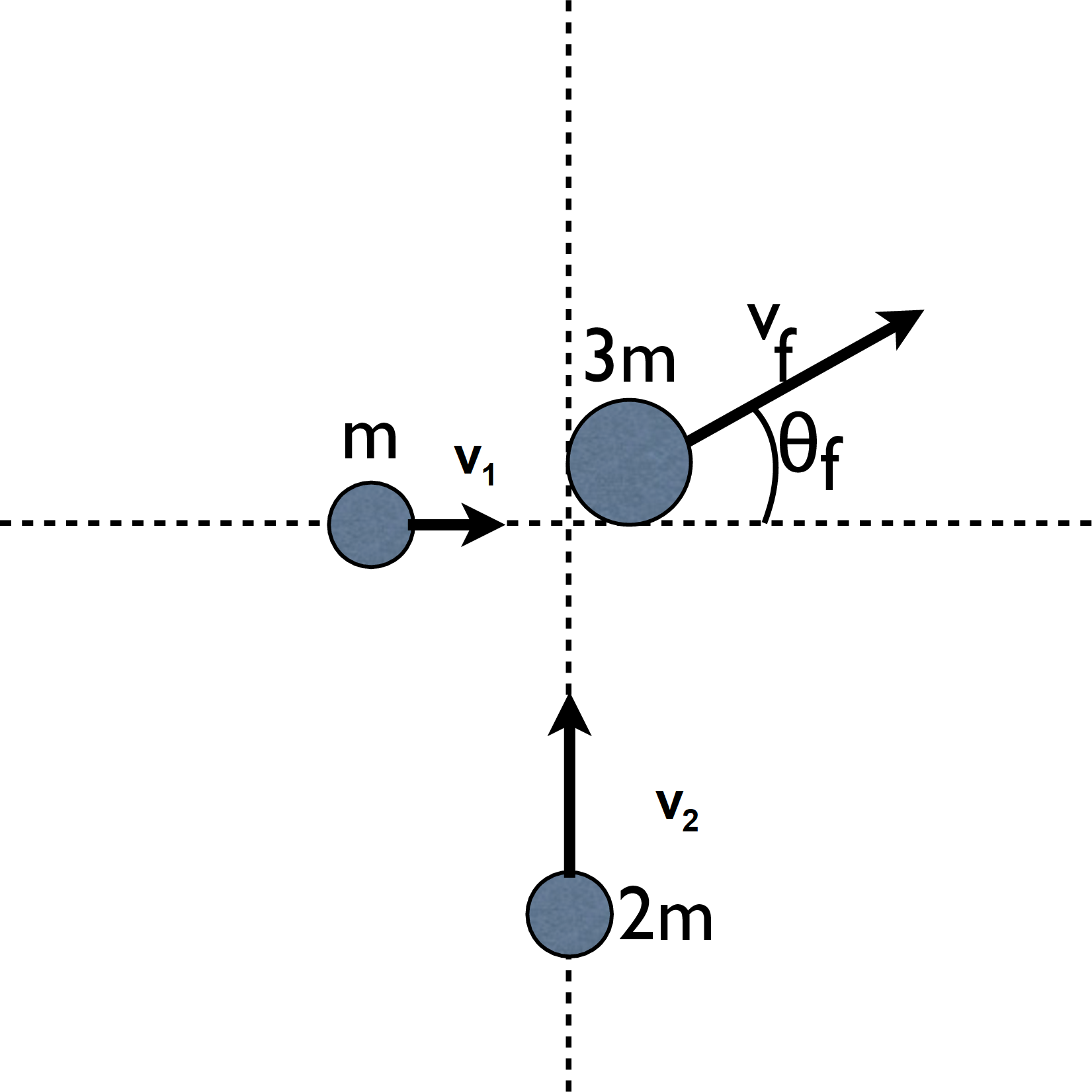Perfectly Inelastic Collision#
Particles of mass \(m\) and \(2m\) have velocities \(v_1=\) 1\(v\hat{x}\) and \(v_2=\) 2\(v\hat{y}\) respectively.

Part 1#
After undergoing a perfectly inelastic collision as shown in the figure, what velocity, \(v_f\), does the resulting particle have? Enter the magnitude of \(v_f\).
Answer Section#
Please enter in a numeric value.
Part 2#
What angle with respect to the \(x-\)axis, \(\theta_f\), does the resulting velocity make?
Answer Section#
Please enter in a numeric value in degrees.
Attribution#
Problem is licensed under the CC-BY-NC-SA 4.0 license.

